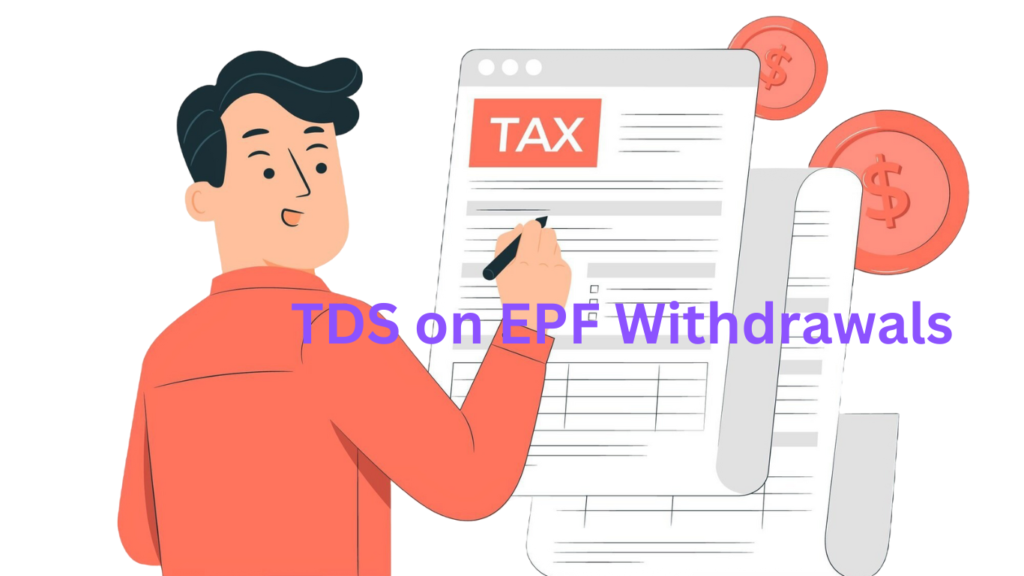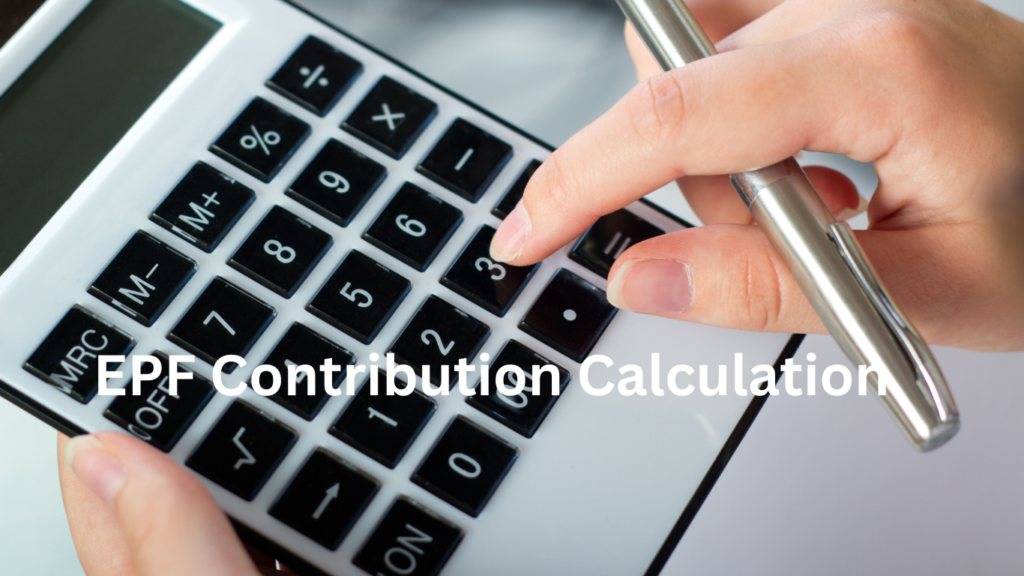When withdrawing from your Employees’ Provident Fund (EPF), it’s essential to know about the Tax Deducted at Source (TDS) rules that may apply. While EPF savings provide financial security, certain conditions trigger TDS, potentially impacting the amount you receive. This post covers all the key rules about TDS on EPF withdrawals, including when it applies, exemptions, and how to avoid TDS if possible.

No TDS in These Cases :
The following situations allow you to withdraw from your EPF account **without TDS deduction**:
1. PF Transfers: If you’re simply transferring your PF balance from one PF account to another (e.g. when changing jobs), no TDS applies.
2. Service Termination Due to Special Reasons: No TDS is deducted if you had to leave your job due to:
Health issues,
Closure of the company or business,
Project completion (for project-based employment), or
Any other reason beyond your control.
3. Withdrawal After 5 Years of Service: If you’ve contributed to EPF for more than 5 years, withdrawals are exempt from TDS, making it tax-free.
4. Withdrawal Amounts Under Rs. 30,000 with Less Than 5 Years of Service: If your EPF balance is less than Rs. 30,000 and you have contributed for less than 5 years, no TDS is deducted.
5. Submission of Form 15G/15H: If your EPF balance is above Rs. 30,000 and you’ve served less than 5 years, you can avoid TDS by submitting **Form 15G** (for individuals with no taxable income) or Form 15H (for senior citizens aged 60+), along with your PAN.
visit the official epfo website for more details.
When Applies TDS on EPF Withdrawals :
If you don’t qualify for any of the above exemptions, TDS will apply to your EPF withdrawal. Here’s a breakdown of the situations where TDS is deducted:
1. EPF Withdrawal of Rs. 30,000 or More with Less Than 5 Years of Service:
TDS at 10%: If you withdraw Rs. 30,000 or more and have served less than 5 years, TDS at 10% applies, provided you have submitted your PAN but have not submitted Form 15G or 15H.
2. TDS at 34.608%: If you fail to submit your PAN, TDS will be deducted at the maximum marginal rate of 34.608%. This high rate emphasizes the importance of providing your PAN to avoid a higher tax deduction.
Read This Also: tax rules on epf withdrawal
Key Points to Remember
1. TDS Deduction Timing: TDS is deducted at the time of payment. Therefore, ensure you understand the rules before initiating a withdrawal.
2. TDS Section: TDS on EPF withdrawals falls under Section 192A of the Income Tax Act, 1961.
3. Use of Form 15G and 15H:
Form 15G: For individuals with no taxable income, using Form 15G helps avoid TDS on EPF withdrawals.
Form 15H: This is for senior citizens (60 years and above) with no taxable income. Both forms serve as declarations to claim a TDS exemption.
4. PAN Requirement: Make sure to provide your PAN on Form 19 (used for EPF withdrawal) as well as on Form 15G or 15H, if applicable. This will help ensure the correct TDS rate and prevent excessive deductions.
Summary of TDS Rules on EPF Withdrawals
Here’s a quick recap of the TDS provisions for EPF withdrawals:
| CONDITIONS | TDS Rates |
| Withdrawal less than Rs. 30,000 | No TDS |
| Transfer to another PF account | No TDS |
| Service terminated due to special reasons | No TDS |
| Withdrawal after 5 years of service | No TDS |
| Rs. 30,000 or more with Form 15G/15H | No TDS |
| Rs. 30,000 or more with PAN but no Form 15G/15H | 10% TDS |
| Rs. 30,000 or more without PAN | 34.608% TDS |
How to Avoid TDS on EPF Withdrawals
1. Submit PAN: Always provide your PAN during withdrawals. Not doing so results in a much higher TDS rate.
2. File Form 15G/15H if Eligible: If you’re eligible to file Form 15G or Form 15H (no taxable income), submit these forms to avoid TDS altogether.
3. Wait for 5 Years: If possible, wait until you have completed 5 years of continuous service to withdraw your EPF without TDS.
4. Confirm TDS Details in Form 26AS: If TDS has been deducted, check Form 26AS on the Income Tax website to ensure it reflects correctly. You can claim a refund when filing your tax return if your income falls below the taxable threshold.
Understanding TDS on EPF withdrawals can help you avoid unnecessary deductions and maximize your savings. Always review your eligibility for exemptions and submit the necessary forms and documentation to minimize or avoid TDS. By following these guidelines, you can make informed decisions and optimize your EPF withdrawals.
FAQ: TDS on EPF Withdrawals :
1. When is TDS applicable on EPF withdrawals?
TDS applies if you withdraw more than ₹30,000 with less than 5 years of service.
2. Can I avoid TDS after 5 years of service?
Yes, withdrawals after 5 years of service are tax-free and exempt from TDS.
3. What if I don’t submit my PAN?
Without PAN, TDS is deducted at 34.608%, the highest rate.
4. What are Form 15G and 15H?
- Form 15G: For individuals with no taxable income to avoid TDS.
- Form 15H: For senior citizens (60+) with no taxable income to claim TDS exemption.
5. Are EPF transfers taxable?
No, transferring EPF between accounts (e.g., during job changes) is tax-free.
6. How can I avoid TDS on withdrawals?
Submit PAN, file Form 15G/15H if eligible, or wait 5 years before withdrawing.
7. Can I claim a TDS refund?
Yes, file your tax return if your income is below the taxable limit to claim a refund.
8. Is TDS applicable for job termination?
No, if the job ends due to health issues, company closure, or project completion, TDS doesn’t apply.
9. How can I check TDS deductions?
Check Form 26AS on the Income Tax website for TDS details after withdrawal.


